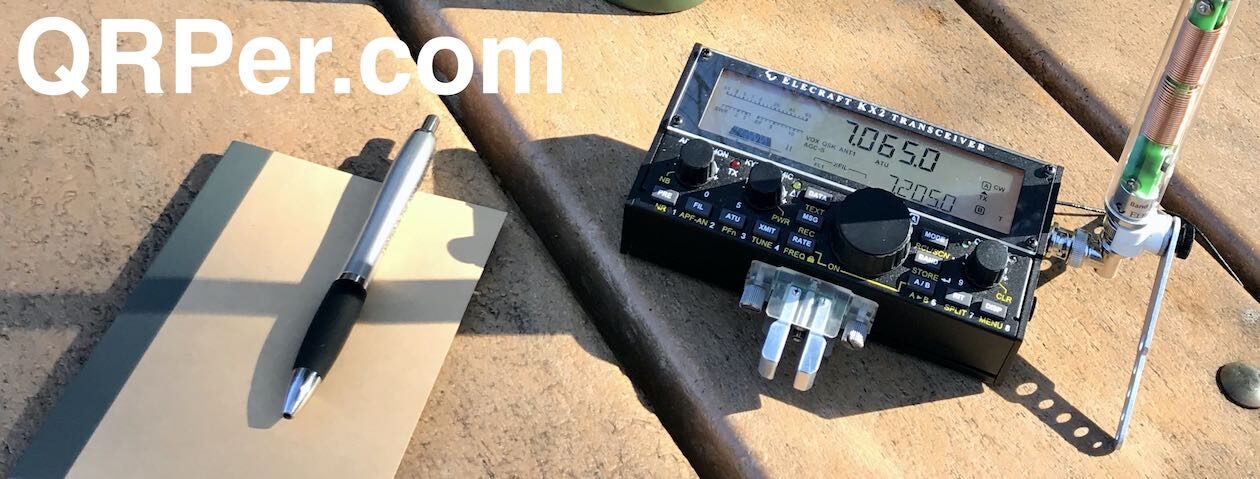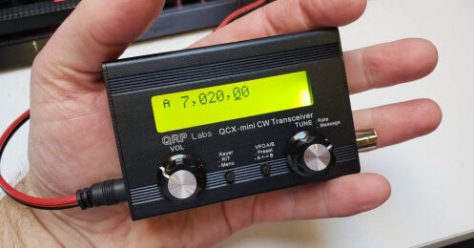On Wednesday (December 16, 2020) I took delivery of the new Mat-Tuner mAT-705Plus ATU.
Mat-Tuner sent this updated and upgraded version of the mAT-705 ATU to me at no cost and asked that I give it a thorough evaluation in the field.
History of the mAT-705
If you’ve been following the story of this tuner, it was the first introduced in September 2020 and designed to pair directly with the Icom IC-705 transceiver. Note that Icom plans to introduce their own IC-705 antenna tuner (the AH-705) but it is not yet on the market at time of posting, so the mAT-705 has certainly had a market opening.

I received the original mAT-705 ATU via Mat-Tuner US distributor, Vibroplex, around the same time I received my Icom IC-705 in early October. I took the original mAT-705 to the field and made a quick video demonstrating its ability to find matches from 160 to 6 meters. In short, it did a brilliant job.
A couple weeks later, however, I discovered that the original mAT-705 had some design shortcomings. I updated my review with this follow-up post. In brief, the mAT-705 could deplete a 9V alkaline battery within a couple of days if you failed to turn off the tuner’s mechanical on/off switch.
Replacing the internal 9V battery was a complicated procedure requiring the user to carefully detach the front panel without losing the LED lenses that were prone to simply pop out. The 9V battery was mounted internally on the board with adhesive–obviously, not an ideal situation for an ATU that would require frequent battery replacement. Due to this, I simply could not recommend the original mAT-705–it was too pricey at $220 for an antenna tuner with so many design shortcomings. For full details, read this post.
Introducing the mAT-705Plus
Mat-Tuner was obviously listening to customer feedback, because within two months they introduced the upgraded and updated mAT-705Plus antenna tuner.

Here are the mAT-705 upgrades:
- No mechanical on/off switch–power is internally managed
- 9V battery replaced with 1000 mAh internal lithium cells
- Batteries are internally charged via USB-C port
- No longer necessary to open the enclosure/housing
Update: Using the mAT-705Plus with other transceivers
Since the new mAT-705Plus lacks a power switch to manually turn it on, I originally noted that I was unsure if it could be engaged via RF sensing when paired with other transceivers. I tried to no avail. Before posting this review, I sent an inquiry to Mat-Tuner about this. Here is their reply:
The power of the new version of the mAT-705Plus tuner is controlled by the KEY signal of the control cable. When KEY is high, the tuner is automatically turned on. The function of following the transmitter to automatically turn on and off is realized.
In addition, the mAT-705Plus tuner follows the ICOM tuner protocol. Like other ICOM tuners, you can manually start the tuning cycle by manually customizing the control cable, just like the AT-120 tuner.
After you solve the KEY signal to trigger the tuner to start and make a manual control cable, you can use it [the mAT-705Plus] for other non-ICOM brand transmitters. But we do not recommend you to use it this way.
Because it is specially designed for the IC-705 transmitter, [it must be modified for use with] other transmitters, which many customers cannot do.
[Since] it uses a magnetic latching relay, after completing the tuning cycle, you can completely turn off the IC-705 transmitter power and connect the tuner to other transmitters.
The tuner will remain in the tuning state.
To clarify, I believe what the Mat-Tuner engineer meant is that if you tune an antenna with the IC-705, you can power the rig down, connect the mAT-705 to another transmitter and the mAT-705 will preserve the last tuner setting (the last match).
Let’s see the mAT-705Plus in action!
Yesterday, I took the mAT-705Plus to the field and paired it with my Chameleon Emcomm III Portable random wire antenna.
I made the following real-time no-edit video yesterday afternoon. Other than charging the mAT-705Plus batteries the night before, this video captures its first time being connected and used.
The Emcomm III Portable random wire antenna’s frequency range is 160-6 meters–the mAT-705Plus quickly found matches on every band.
Summary
 At first blush, the mAT-705Plus looks like the ATU Mat-Tuner should have released on the first go: it’s portable, lightweight, fully automatic, rechargeable, and quickly finds matches across the HF spectrum.
At first blush, the mAT-705Plus looks like the ATU Mat-Tuner should have released on the first go: it’s portable, lightweight, fully automatic, rechargeable, and quickly finds matches across the HF spectrum.

We’ll see how well the power management works in real life. I plan to take it to the field over the next few months and carry a small USB battery pack to recharge the mAT-705Plus when the batteries are finally depleted. Hopefully, I won’t need to recharge it for a long time! The proof will be in the pudding!
Of course, I’ll also pair the mAT-705Plus with an assortment of antennas: random wires, verticals, delta loops, doublets, dipoles, and end-feds.
Stay tuned! [See what I did there? Rimshot anyone? Anyone–?] 🙂
Mat-Tuner authorized distributors:













